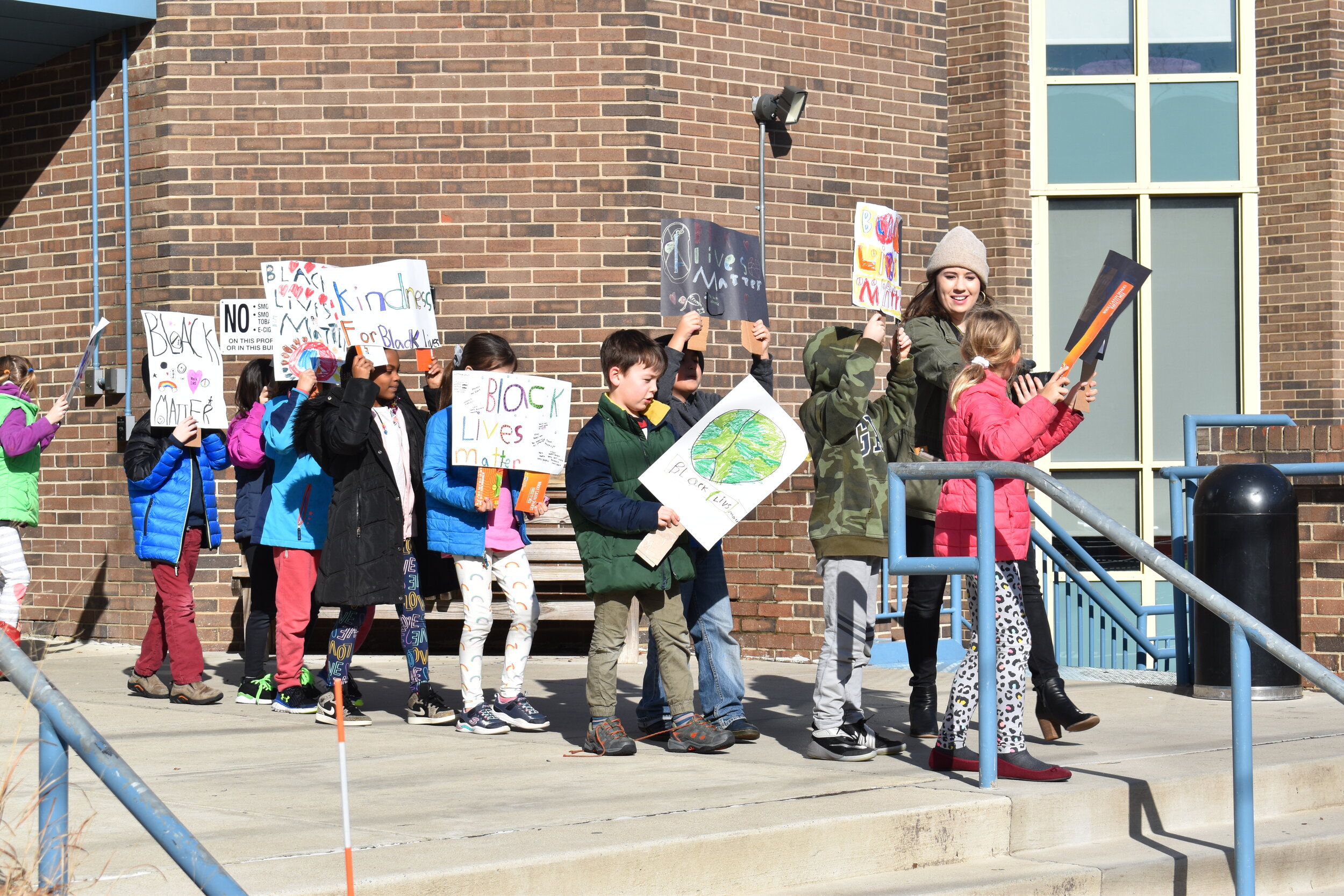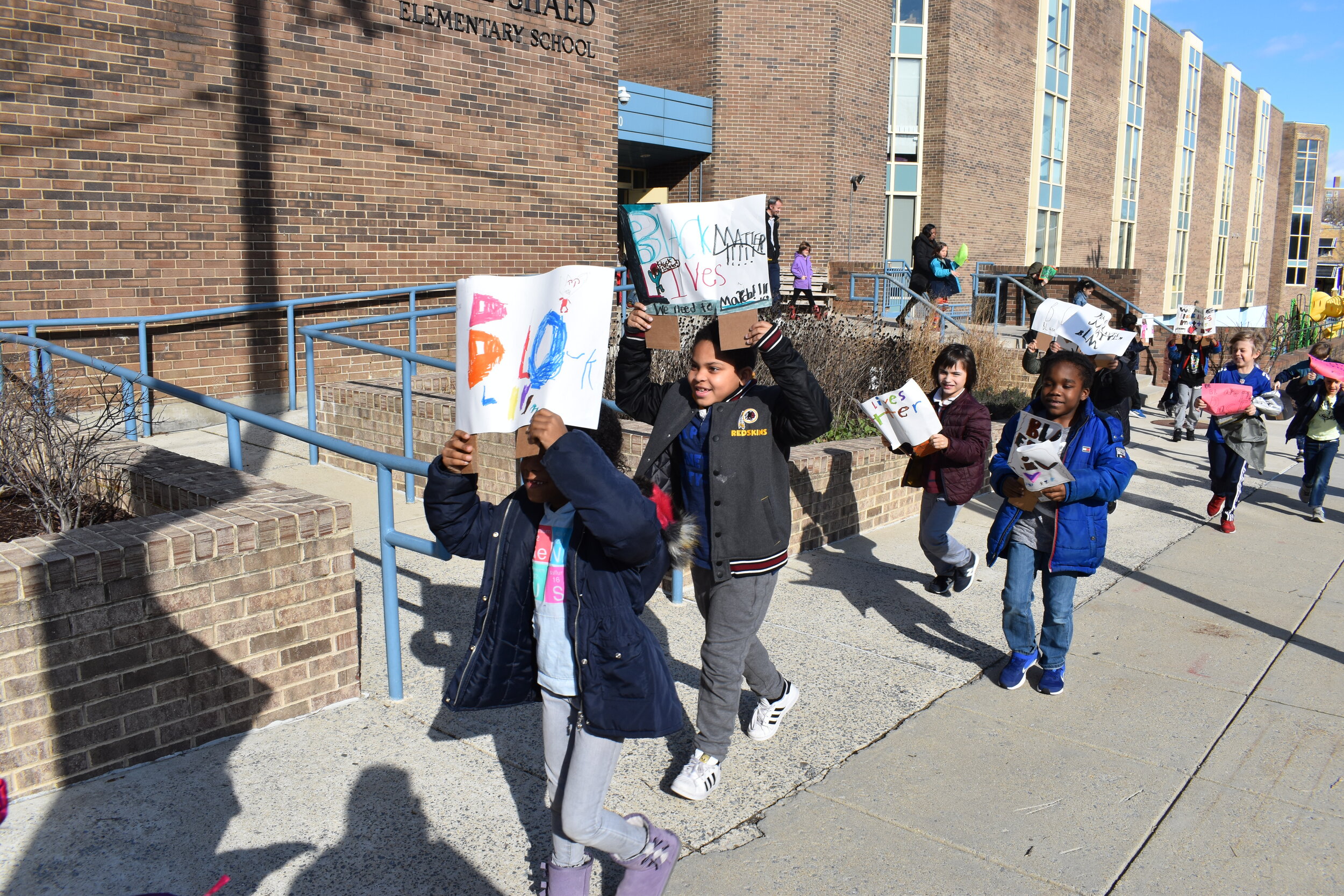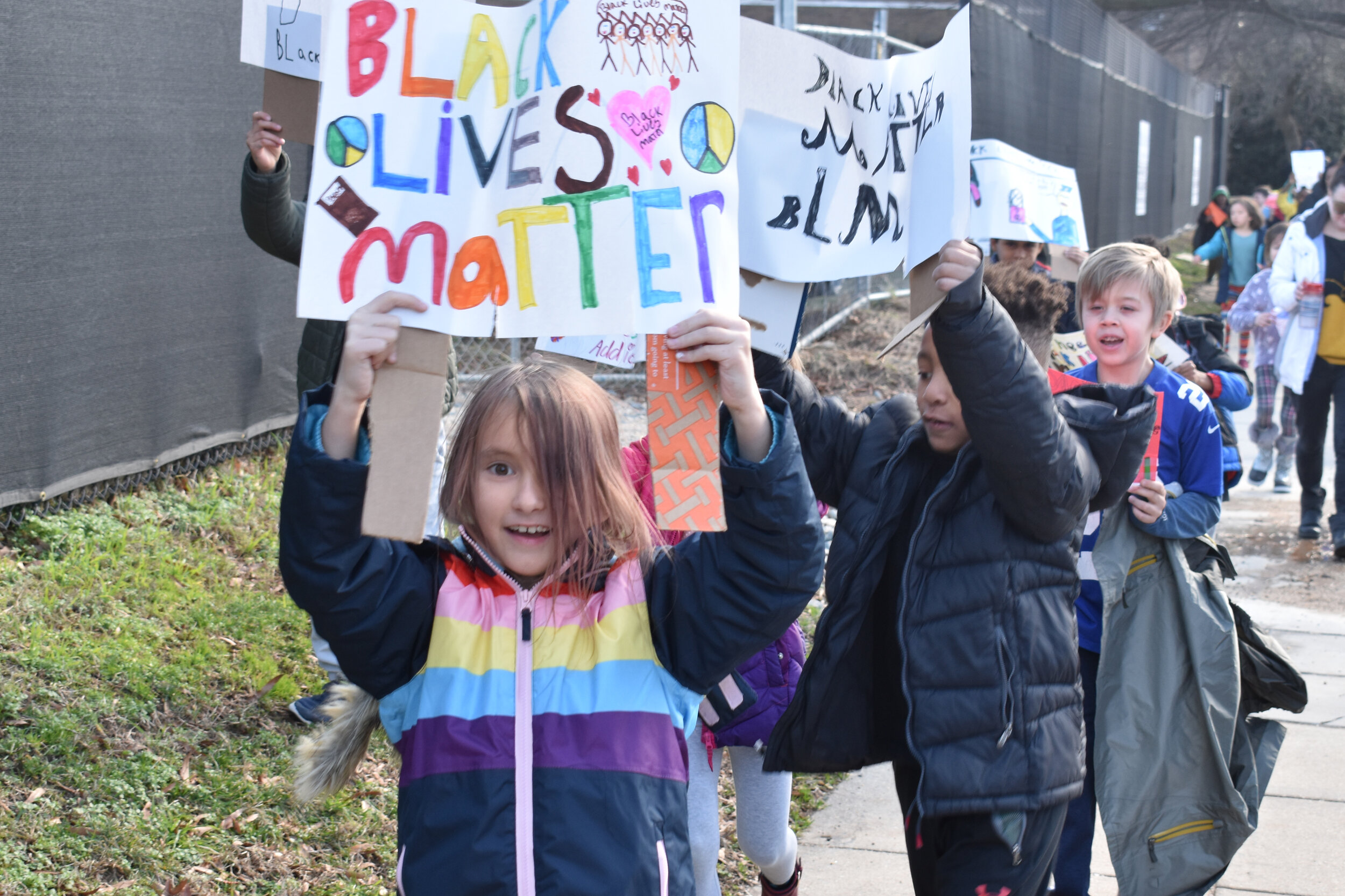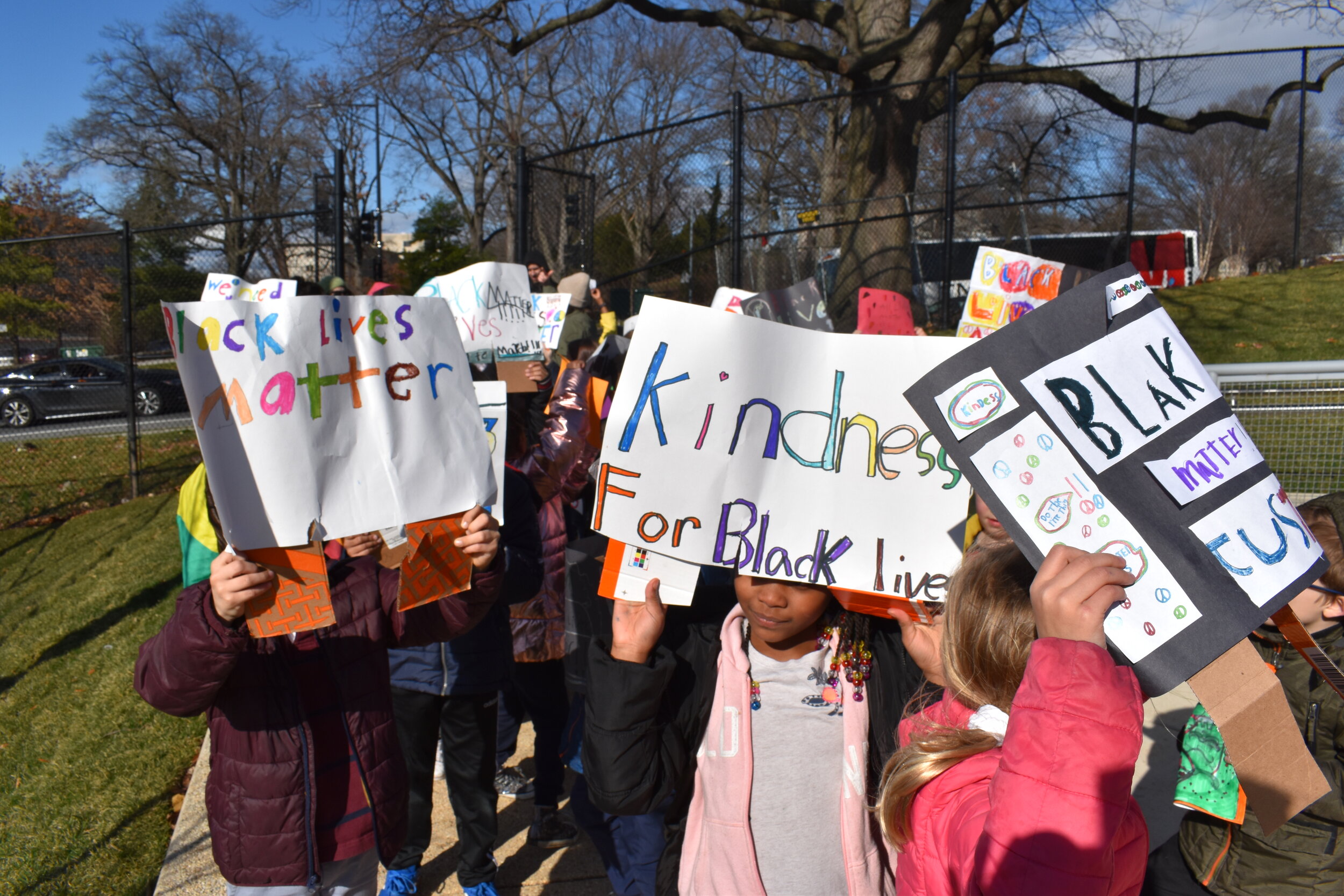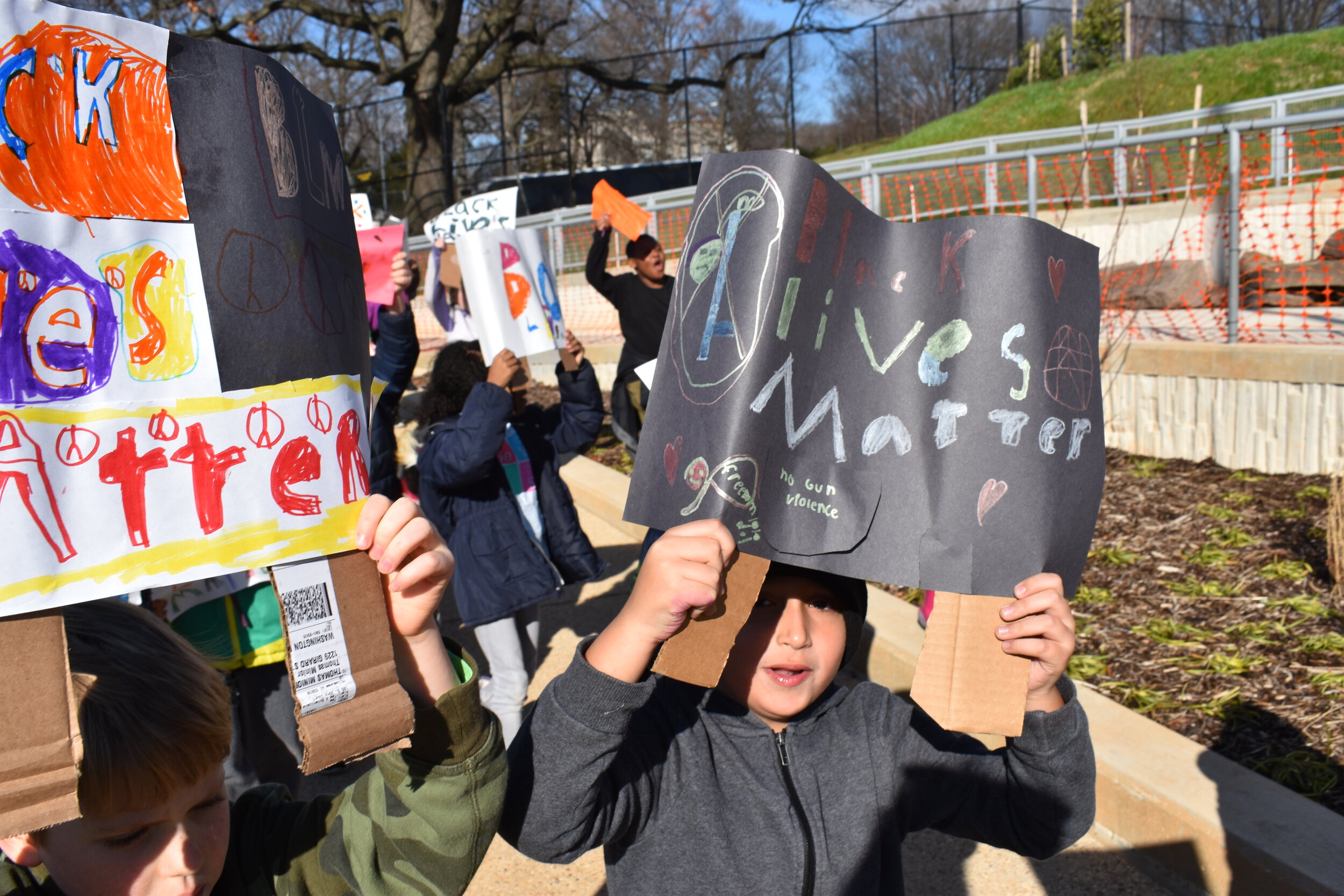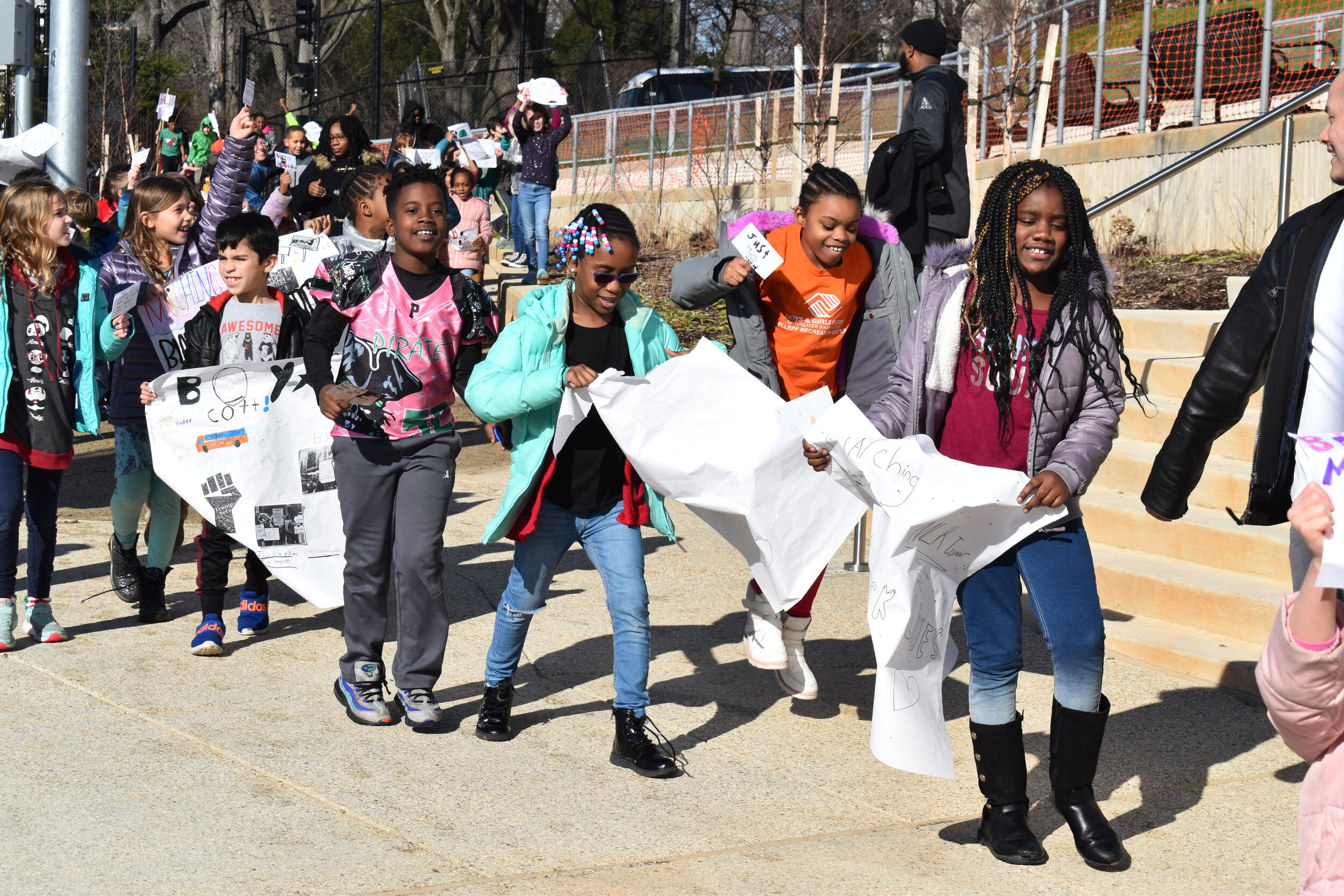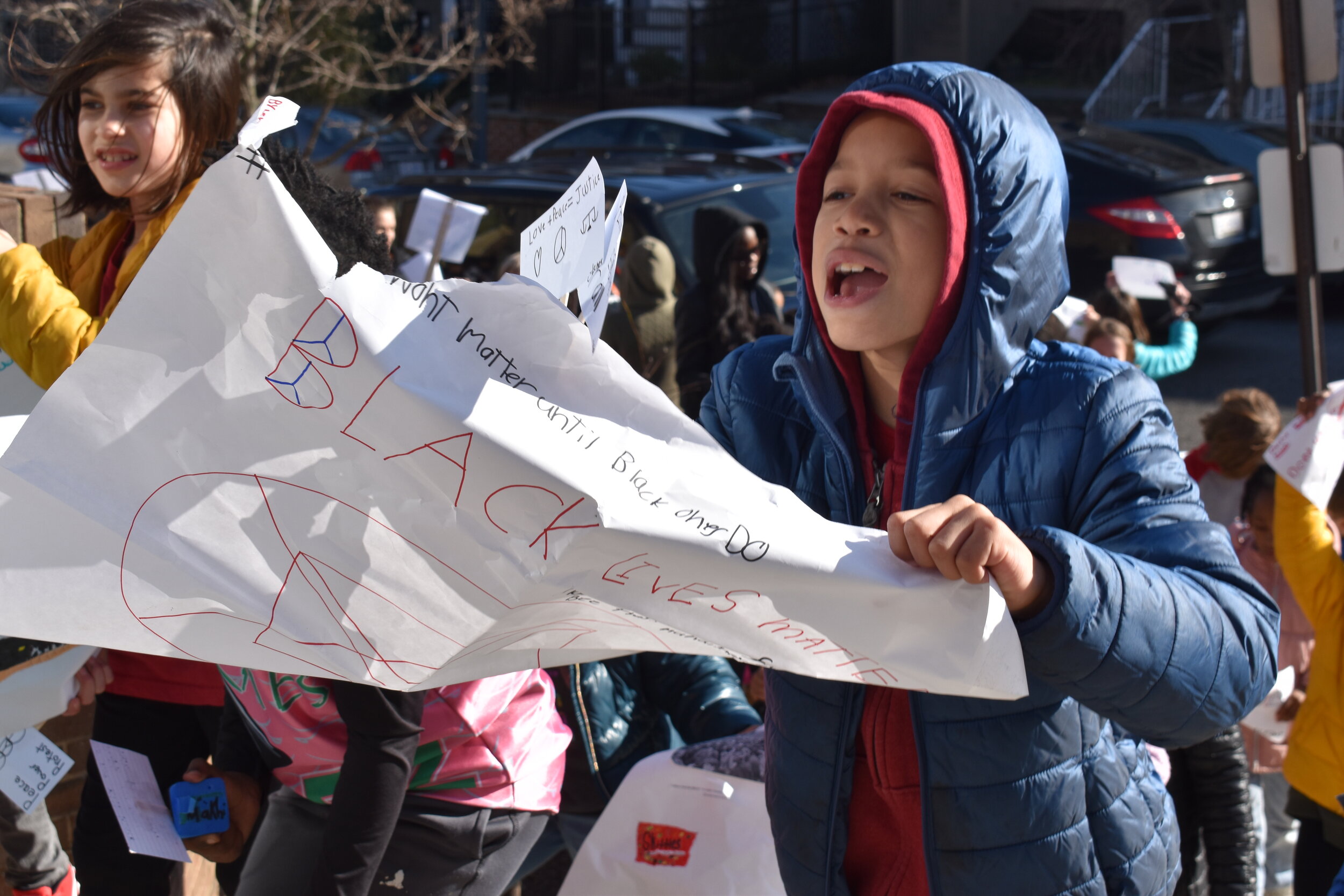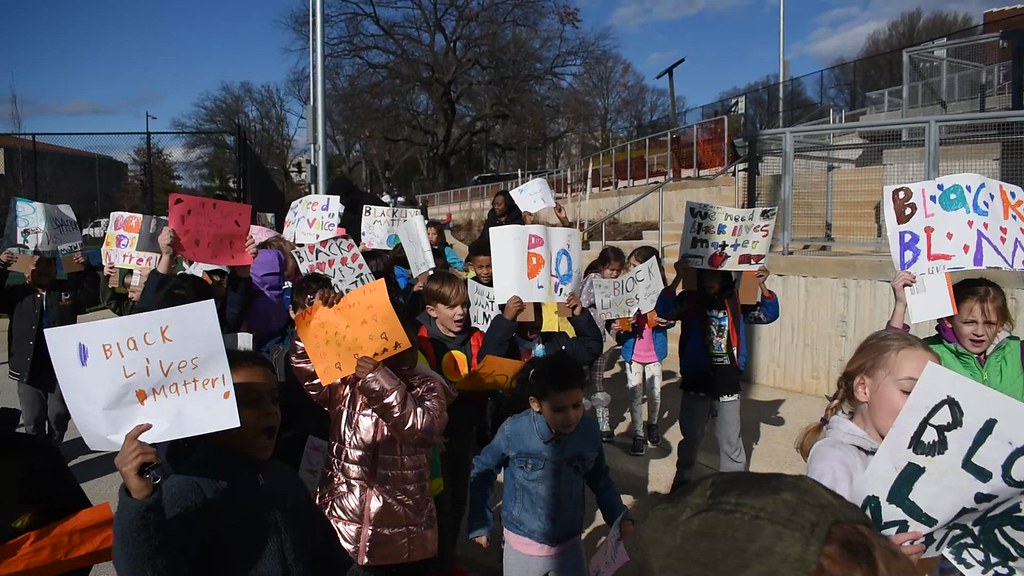Second Graders Study Activism
By Allison Acosta
Second graders in Katie Soffer and Kina Gee’s classroom at Inspired Teaching Demonstration PCS learned about activism as part of the Black Lives Matter at School Week of Action.
In preparation for the week of action, students learned about Marley Dias and her #1000BlackGirlBooks campaign. Students did a close reading of an article about Dias and then responded in writing to the prompt:
We learned about a young girl named Marley Dias who noticed a problem in her community and started a campaign called #1000BlackGirlBooks to make a difference. What lesson can we learn from Marley? How can we use those lessons to make a change in our own community?
Students also learned about Barbara Jordan, reading What do you do with a voice like that? The Story of Extraordinary Congresswoman Barbara Jordan and wrote about what problems they see that they would like to use their voices to bring attention to.
The entire school focused on the Black Lives Matter principle of “Loving Engagement” during this year’s week of action. On Monday morning, students attended a community meeting to begin to explore this concept.
After the community meeting, second grade lead teacher Katie Soffer read Say Something, which was also read by every classroom in the school as part of the week of action. Soffer explained,
Loving engagement means getting involved when you notice a problem or something that needs to be changed. It also means using your voice like Barbara Jordan did to make a difference.
Soffer asked the class to reflect on the principle of loving engagement in writing, then share with the group. She charted their responses to the question “What does loving engagement mean to you?”
Throughout the week, the students read books and articles about activists and allies. For each activist, Soffer asked students to reflect on the different types of activism they engaged in, then charted, where applicable:
Why did the activist take a stand? What injustices were they trying to bring attention to?
How did people react?
How did those actions demonstrate the principle of loving engagement?
On Monday, the day after Super Bowl, students learned about Colin Kaepernick. Students then wrote a letter to the NFL to explain why Kaepernick took a knee during the National Anthem, and how he demonstrates loving engagement.
On Tuesday, students learned about Mari Copney, “Little Miss Flint.” Then they wrote about the problem she was trying to solve and how her actions had a positive impact on her community.
Wednesday, students read She Stood for Freedom: The Untold Story of a Civil Rights Hero, Joan Trumpauer Mulholland by Loki Mulholland. The students discussed:
Why is it important that we have allies?
How can you be an ally?
What are some injustices that you have noticed and how do you plan on supporting those causes even if they do not impact you?
To learn about different types of activism, students read The Wedding Portrait by Innosanto Nagara. As she read, Soffer defined and charted different types of protest (boycott, blockade, civil disobedience). Students then responded to the writing prompt:
What did loving engagement look like in The Wedding Portrait? What are some challenges that can make practicing activism or loving engagement difficult?
On Wednesday, Soffer told students that many schools don’t participate in the Black Lives Matter at School Week of Action.
The students thought it would be a good idea to do a march around the neighborhood to encourage other schools and neighbors to get involved. To prepare for the march, students read Let the Children March and created colorful signs.
On Friday afternoon, second graders led first and fifth graders in a march around the neighborhood, chanting “Black Lives Matter” and “We want justice! We want peace!”
Students were excited and encouraged by neighbors who waved and cars who stopped and honked their horns in support.
Following the week of action, students contiued to study activists and activism, and created an “Activist Museum.”




